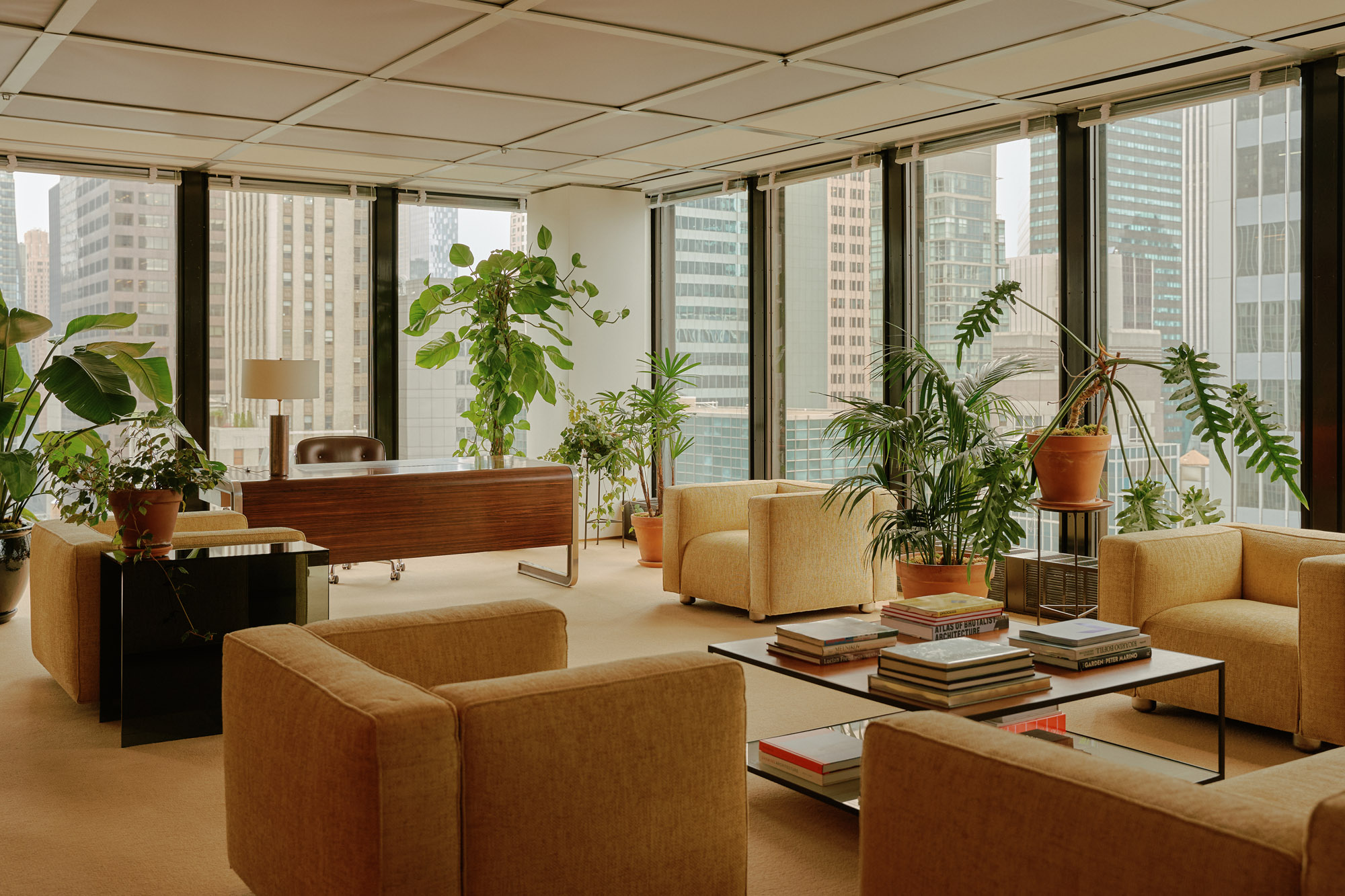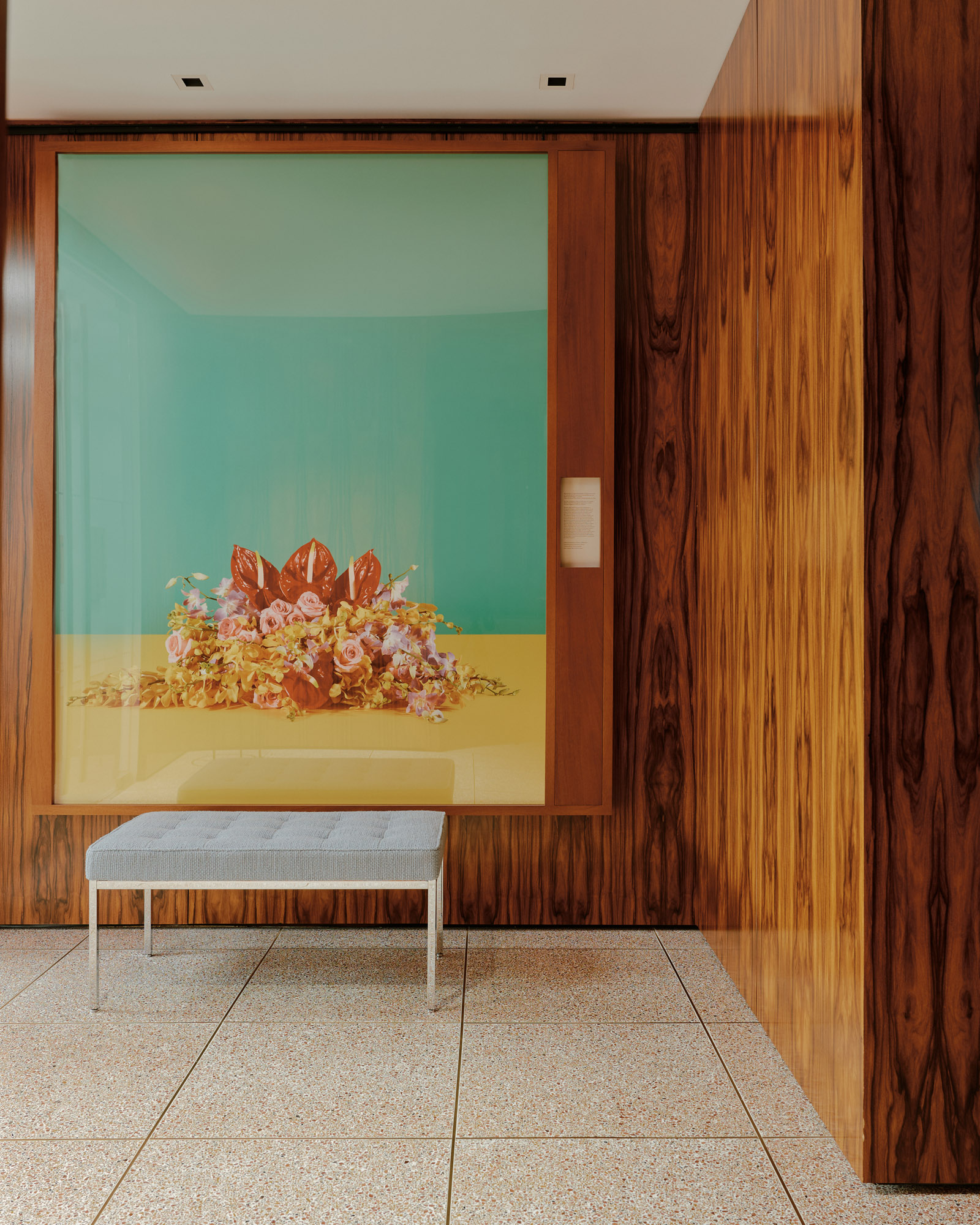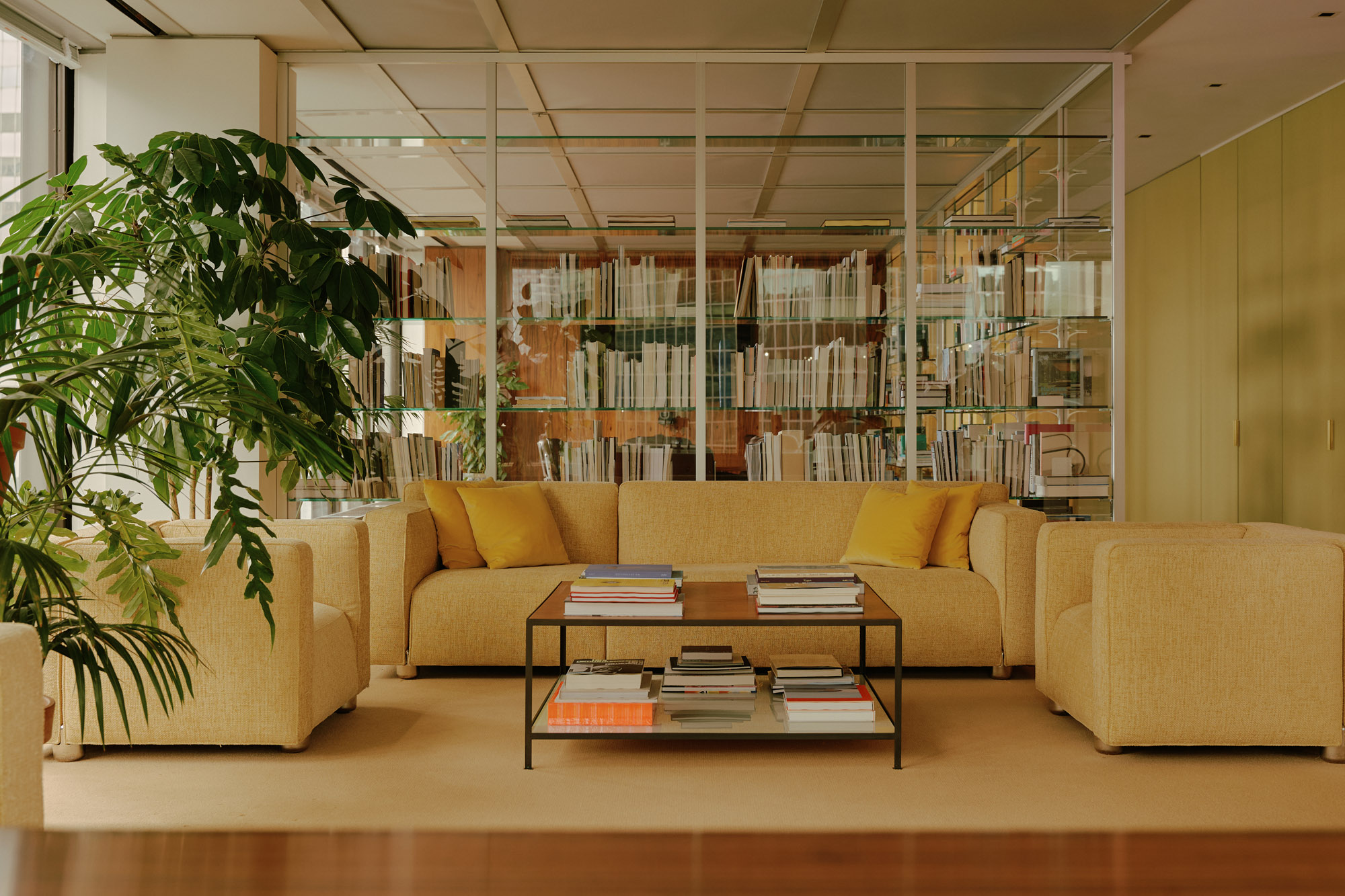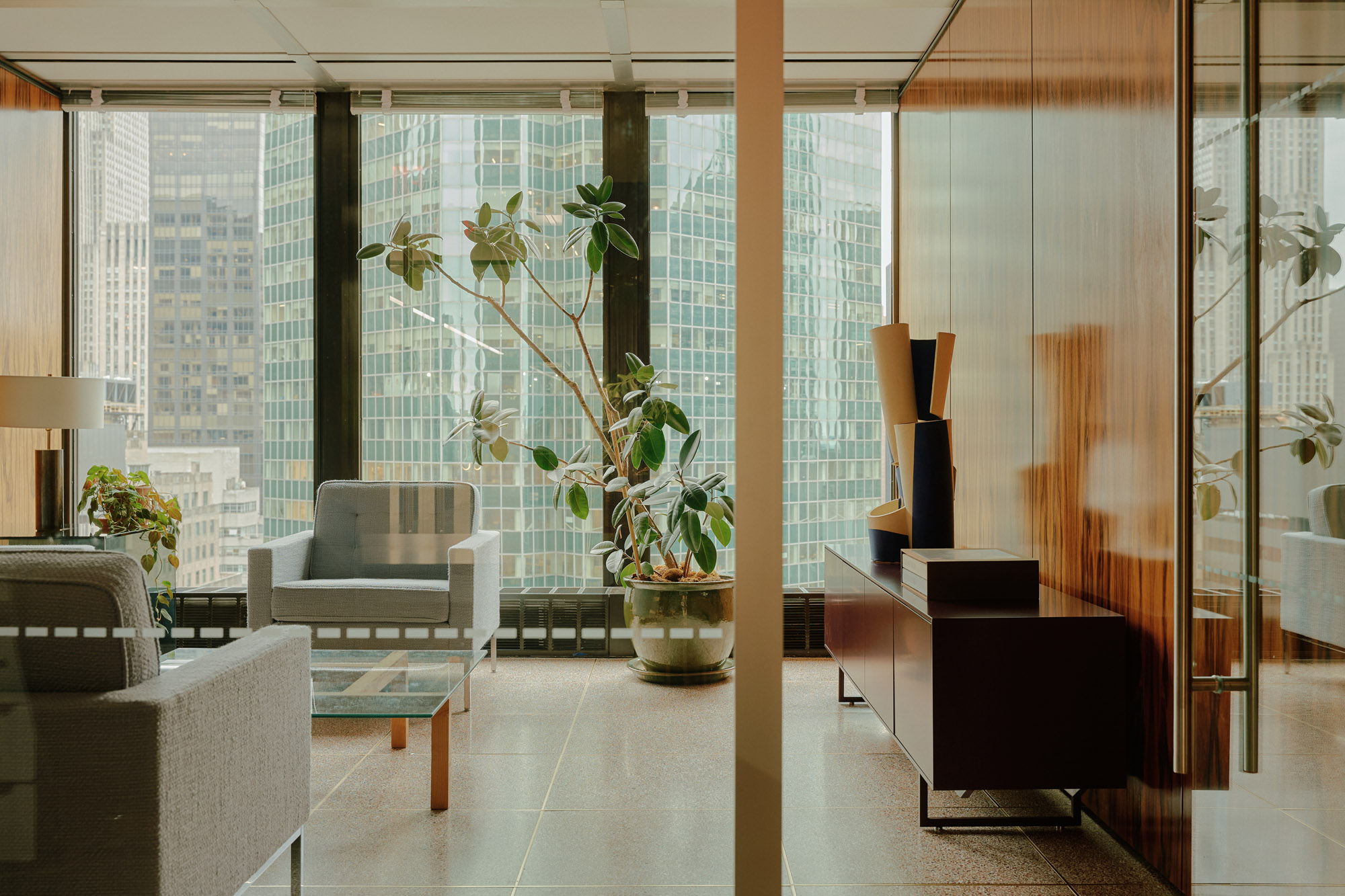
Good taste, as they say, never goes out of style, and the aphorism is no more apparent than in the New York headquarters of Ray, a residential development company helmed by the art collector and Garage Museum founder Dasha Zhukova. The office is located on the 25th floor of Ludwig Mies van der Rohe’s Seagram Building at 375 Park Avenue, and Ray creative director Suzanne Demisch, of design gallery Demisch Danant, has made it a homage to corporate modernism with bookmatched rosewood walls, Florence Knoll sofas and pale gold carpeting. With a panorama of Manhattan visible through its floor-to-ceiling windows, and artwork by Taryn Simon and Jonas Wood, the office is as inspiring as it is commanding.
Meanwhile, Ray is remaking skylines across the US with residential high-rises that reflect the same sensibility as its HQ: materially rich and outfitted with vintage furniture and contemporary art – the sort of places where design obsessives feel right at home. But more than building skyscrapers, Ray is also nurturing artistically-minded communities within them, establishing creative hubs not only for their residents, but for the city as a whole. ‘We believe that an intimate shared experience of art, design and architecture has the power to positively impact people’s lives,’ says Demisch.

Step inside Ray's Seagram Building office
The developer’s projects include Ray Philly, with Leong Leong; Ray Harlem, in collaboration with Frida Escobedo and Little Wing Lee; and Ray Phoenix and Ray Nashville, both with Johnston Marklee and Parts and Labor. In the residential real estate landscape, this type of pedigree is typically reserved for condominiums, but all of Ray’s projects are mixed-use rental buildings, with apartments on the upper floors and cultural programming at street level. While cities across the country are looking to mixed-use development to bring much-needed housing into urban centres, the aesthetics are generally woefully nondescript, with design value-engineered out.
Ray’s projects, on the other hand, centre on design and so are more civic-minded – an approach that entices its collaborators. ‘Multi-family rental housing is one of the most important typologies we can invest in today to make our cities more liveable,’ says Sharon Johnston of Johnston Marklee. ‘A human scale and attention to detail [in these projects] will contribute to pedestrian life in these cities.’

Sitting on the border of Philadelphia’s Fishtown and Kensington, former industrial areas that are now artistic hubs, Ray Philly, the first completed project, demonstrates this approach. Architects Leong Leong knew that the building would need to engage with its neighbourhood. ‘For us, this meant leaning into the materiality of the historic buildings and thinking about how to work with brick in a tactile way, creating a story tied to its place through a sense of depth and relief – not an easy feat within typical development constraints,’ says Dominic Leong. For the façade, the firm specified the same hand-split brick found on Vitra’s Schaudepot by Herzog & de Meuron in Germany. On the ground floor, there is a co-working lounge, artist studios, and a retail and project space for Ulises, a local art book publisher.
Thanks to its design and programming, Ray Philly feels as though it has always been a part of the area, even though it only opened in 2023. ‘It delights us when residents ask, ‘What was this building before?’ says Demisch. ‘It’s our ultimate desire for our development projects to feel at home in the neighbourhoods in which we build, while also contributing something architecturally significant for decades to come.’

You’ll find a similar neighbourhood-specific approach in all of Ray’s projects. Ray Harlem, which is set to open later this year, includes more than 200 market-rate and affordable apartments and will also be the new home of the National Black Theatre, founded in New York in 1968. The building’s pink-red brick exterior nods to the Osun-Osogbo sacred grove in Nigeria (the theatre’s former space was adorned with sculptures by contemporary artists from the grove) and its ground-floor ‘living room’ will be open to the public. Ray Phoenix, opening in 2026, also takes cues from its surroundings. Its green façade will change with the sunlight throughout the day – ‘a reflection of the ephemerality of life in an arid climate,’ says Johnston. She’s still fine-tuning the Ray Nashville project, but when it’s complete in 2027, its blues will blend in with the sky.
Demisch hopes that Ray’s approach appeals to other developers. ‘We need a paradigm shift, where visual culture is not treated as an afterthought but embraced as a cornerstone of development practices for the benefit of residents and the entire community,’ she says.








